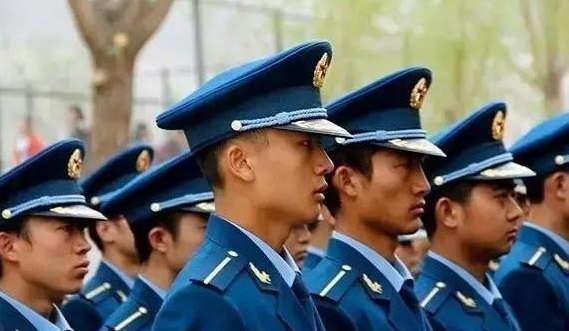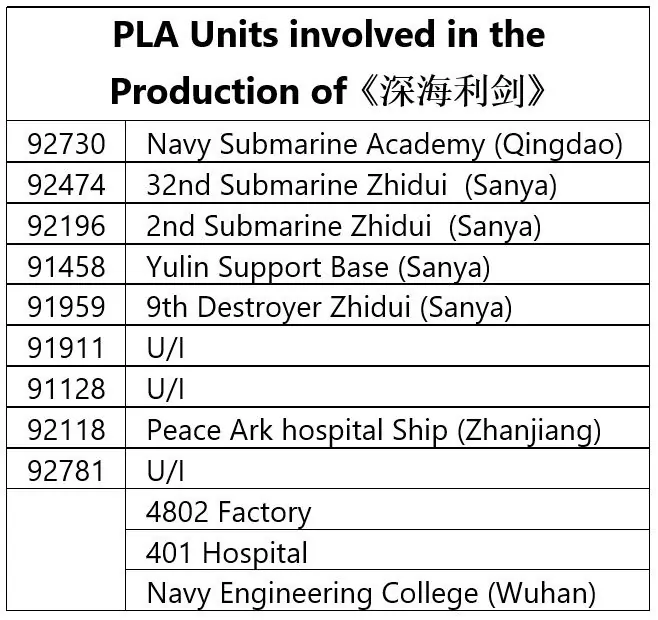
PLA Attempts to Attract Higher-Quality Recruits
Publication: China Brief Volume: 17 Issue: 12
By:

In late August, China’s annual conscription (征兵) period ended. This years’ newest group of PLA recruits was reportedly among the worst in recent memory, with widespread reportage across Chinese and international media about the recruits’ health issues. As an article in the Chinese military’s official newspaper put it, “One [unnamed] cities’ physical exam washout rate for conscripts was 56.9 percent—enough to leave one speechless” (PLA Daily, October 28). Recruits were overweight, inactive or psychologically unfit.
Conscription, which began in early May, accepts young men and women between the ages of 18–22 and forms the bulk of the PLA. Conscripts serve for two years, before leaving the PLA or advancing to become Non-Commissioned Officers. Recruits for the PLA’s officer track are brought in at the same time. According to the Chinese Ministry of Education, over 1,070,000 college students signed up for PLA in 2017, an increase of 5.6 percent over last year (Ministry of Education, August 30). Of these, only a fraction of these will make it into the PLA.
Those that do join will increasingly be representative of how China’s changing demographics and transitioning economy are having an impact on its ability to attract high-quality recruits. The PLA has traditionally had a social and economic function as well as its military purpose—the bulk of recruits have been from rural areas, and the PLA provided them with skills to help move up the labor value chain. As China’s level of urbanization reaches higher levels (57.35 percent as of 2016), recruits will increasingly need to be drawn from urban areas (China Economic Net, January 20). The educational and economic differences between rural and urban areas are increasing, and educational attainment is overwhelmingly higher in the cities. According to Stanford University’s Scott Rozelle, “China has the lowest level of human capital in the middle income world” and less than one in every four has high school education (CSIS, September 14). China’s upside-down population pyramid is also likely to have an effect.
Although China’s One Child Policy was ended in 2015, it will continue to have a lingering effect on the PLA—most recruits for the next 15 years will likely not have siblings. [1] The policy also contributed to China’s dramatic population aging (老龄化), which according to some estimates will lead to there being two retired people for every working class person by 2050 (China Brief, November 2, 2015). Population aging could have a chilling effect on recruitment, as more young people are needed in the workforce, with higher paying jobs, to support their parents.
As the PLA modernizes and adopts more sophisticated equipment, higher levels of education among recruits are necessary. To attract more highly educated students the PLA has created a number of incentives. One of the pathways for college students, “National Defense Students” (Guofangsheng; 国防生)—somewhat similar to Reserve Officer Training Corps (ROTC) in the United States—are an increasingly important proportion of PLA recruits. In Beijing, undergraduate students receive $31,680 per year. Recruits from trade schools recieve $31,278 (China Daily, July 27). As the program continues to attract greater numbers of students, the PLA is increasing its standards. In May, the Central Military Commission (CMC) announced that the PLA would begin to focus more on direct recruitment of college students (People’s Daily, May 30).
The PLA also extends special consideration to a number of categories, including bilingual ethnic minorities. Though the number of women serving in the PLA is small (only 115,000 of 1.6 million in 2016), they have increasingly been given higher profile roles, including combat positions, in recent years (see China Brief, October 4; October 26).
In addition to financial incentives, the PLA has borrowed from the Pentagon’s Hollywood playbook and invested in TV series and movies targeted directly at encouraging young people to sign up. In late July CCTV premiered the PLA Navy-focused Sharp Sword of the Deep 《深海利剑》, a 34-episode series following a group of young college students from their recruitment into the Submarine Force through training and eventually to performing missions escorting PLAN surface ships on anti-piracy missions. The series, which received direct support from China’s South Sea Fleet and the Submarine Academy in Qingdao, directly addresses issues such as China’s changing class structure and attempts to make the navy life appealing to a broad audience. [2] Though widely panned on Chinese review sites such as Douban.com, the series is at least indicative of the PLA’s willingness to spend significant amounts to reach young Chinese through popular television.
Not to be left out, the Chinese Air Force is involved in the production of the big-budget Sky Hunter 《空天猎》, a blockbuster film featuring major stars such as Fan Bingbing planned for release on September 30. In an interview with the Global Times, one of the producers of the film, a former PLAAF officer, clearly expressed the recruitment value of the film:
“The original intention of the PLA Air Force to produce this movie is simple. We don’t intend to make money; we want to use it to tell the people, especially the youth, what the PLA Air Force is like and what it can do to protect the country in this era and the future” (Global Times, September 10).
These TV series and movies, as with earlier productions such as Soldiers’ Sortie 《士兵突击》, appear to be having an effect and are widely cited as helping inspire young Chinese to join the PLA (China Daily, July 27; China Brief, July 26, 2013).
China’s economic situation is also helping incentivize more young people to join the PLA. Since hitting a five-year low in 2014, Chinese youth unemployment is again rising—has stood at over 10 percent since 2010. [3] With financial incentives and the chance for specialized training, the PLA remains a decent option for many Chinese youths.
The primary challenges then remain to attract high-quality recruits and to decrease corruption in the recruitment system.
The Chinese government is clearly concerned about the physical and mental health of recruits. In April, the CCP Central Committee and State Council instituted nationwide A Mid-Long-term Youth Development Plan (2016-2025) to “urgently improve the standard of physical health of young people” (Gov.cn, April 13).
The PLA has also struggled to rid itself of a culture of corruption. The selling of officer commissions reached to the highest levels of command, including former CMC member Xu Caihou. Although Xi Jinping and Wang Qishan’s anti-corruption campaign has targeted both “tigers” [like Xu] and “flies”, corruption remains a problem, PLA media periodically reports on local efforts to recruit ‘honest inspectors’ to reduce corruption at the grassroots level (MOD, August 21).

To achieve China’s “strong military dream” (强军梦) the PLA is going to have to continue to invest heavily in its people: providing more financial incentives, job training, and better living standards. For the majority of people in China, life has improved dramatically in the past twenty years, but prosperity is bringing its own challenges, with associated health problems from richer foods, and demographic problems due to the One Child Policy. These longer-term trends have the potential to undercut the PLA’s strength just as it makes major strides in improving training, equipment, and technological development.
Peter Wood is the Editor of China Brief. You can follow him on Twitter @PeterWood_PDW
Notes:
- The One-Child Policy always had exceptions for people in rural areas, minorities, and other categories.
- End credits for the Sharp Sword of the Deep thank the following PLA Units (using their Military Unit Cover Designator). The real unit name is provided where possible
- World Bank, Youth Unemployment Rate for China, retrieved from FRED, Federal Reserve Bank of St. Louis; https://fred.stlouisfed.org/series/SLUEM1524ZSCHN, September 19, 2017.




